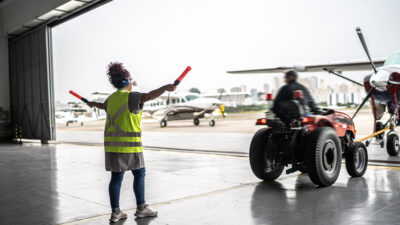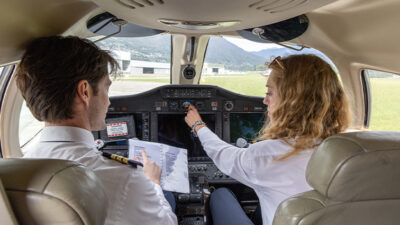Selecting Items To Include on Your FRAT

At its core, the Flight Risk Assessment Tool (FRAT) is a pre-flight evaluation of potential threats faced in a mission or flight. Developed from research and detailed study of accidents occurring in the aviation industry in the early 2000s, the FRAT was revolutionary when it became mainstream in 2007.
Today, the FRAT is used by thousands of organizations and is a tool to provide:
- Awareness to the crew of what they may face
- The opportunity to address risk prior to a flight
The appeal of the FRAT is an organization’s ability to customize it. The threats, as well as how those threats are scored, can be adjusted based on perceived impact.
It is important to note that the same FRAT would not fit the needs and priorities of multiple organizations. A preflight evaluation of threats (internal and external) is unique to the organization’s scope, mission and mitigation effectiveness of identified risk in operations.
Ask the Right Questions to Get Valuable Answers
It is important to consider whether your FRAT is asking the right questions. Many organizations include threats that have already been addressed in the risk assessment and mitigation process.
Our industry is one that already benefits from regulation, training and the use of best practices. Consequently, crews are already prepared to deal with many—if not all—of the items common on FRATs today. Does this mean a point-based evaluation is pointless? Not necessarily.
The Importance of Adaptation
Aircrews operate in a complex system. Of the many traits associated with complex systems, we will focus on adaptation.
Agents within complex systems adapt to their conditions, which produces unpredictable results. Typically, that adaptation leads to successful outcomes despite the numerous risks faced in the operating environment.
Successes can also be attributed to the defenses built into the system, but environmental adaptations are essential. So, enumerating items that will be faced in a flight or mission may be a reductionist practice. For example, an approach to minimums by itself in a controlled setting is really not an eyebrow-raising event. But in our environment, the setting is rarely controlled and events are introduced that can make things more complex.
Again, a crew is able to take in various events within an operating context and adapt. But what happens if the number of events necessitating adaptation exceeds our capacity to adjust?
When adaptation is required, you will have performance variability. In a normal operating context, there is a margin that allows us to fail and recover. Yet, when the situation is made overly complex, normal performance variability can take us outside of the capacity to fail safely.
Another important factor is degradation in one’s ability to adapt. At our best, we can react properly to several challenges and threats in the system. This ability is developed and maintained by our training, fitness for duty, and the tools at our disposal. However, our adaptability can be compromised by a lack of any of those factors.
Formulating a Better FRAT
Considering the concepts above, it might be beneficial to identify preflight evaluation items that increase system complexity or reduce the crew’s ability to adapt rather than addressing random items the organization feels are “high risk.”
For example, flying into high-traffic-density airports as a single pilot increases complexity. Add thunderstorms in the area to that scenario and now you are requiring the pilot to navigate hazardous weather and coordinate with a busy air traffic control center.
We are trained to handle both contingencies and can adapt. But the presence of those factors along with others that might increase complexity (e.g., MEL operating restrictions, a demanding passenger, etc.) can create a situation where the outcome may be more questionable.
In addition, factors that can degrade our adaptability—fatigue, illness, lack of experience, lack of recency of experience, etc.—usually end up as FRAT line items with a subjective score. In reality, these items are more global and impact our ability to adapt effectively to situations in every phase of flight. Therefore, maybe we should look at these items as overall modifiers or weighting factors on items that increase complexity.
FRAT Food for Thought
A FRAT is an important component of safety management. This notion of proactively evaluating whether the context may be too complex or if there are items that may degrade adaptive capacity is a novel way of looking at preflight evaluations.
This framework has not been tested, so there is no empirical evidence regarding its validity. The notion is purely academic, and the purpose of this article is to spur thought and consideration.
The FRAT is a prolific tool used by thousands of organizations and endorsed by industry and regulatory standards. Still, it might be time to nudge the FRAT into the next generation and embrace complexity versus reductionism. Through evaluating a flight or mission in the context of items that increase complexity and/or degrade adaptability, organization may get a better picture of the probability of a successful outcome.
 Baldwin Safety & Compliance
Baldwin Safety & ComplianceCustomized Safety Management programs developed by experienced and credentialed safety professionals include training, manual management and SMS implementation/software. Based on ICAO and other international standards and regulations, Baldwin’s programs support Business Aviation, Charter, FBO, Airport, Medical Transport and Regional Airlines by providing advanced software, an outstanding customer experience and our Commitment to Excellence.
http://www.baldwinaviation.com
© 2024 Baldwin Safety & Compliance. All Rights Reserved.
Next ArticleRelated Posts

The Effects of a Learning Mindset on Safety Culture
As aviation departments strive to enhance their safety performance, a critical yet often overlooked element is the need to foster a learning-culture mindset. This mindset shift can unlock invaluable opportunities for continuous improvement, employee engagement and creating a resilient safety environment. From a behavioral management perspective, as your company’s learning culture goes, so goes the ongoing success of your SMS.

Safety in Numbers: Trends in Aviation Accidents and Incidents
Every accident is preventable; the problem is that we don’t know how to prevent it until after the accident happens. However, what we can do as an industry is honor the anguish of each event by sharing the information, the mistakes and the outcomes to improve safety for everyone.

